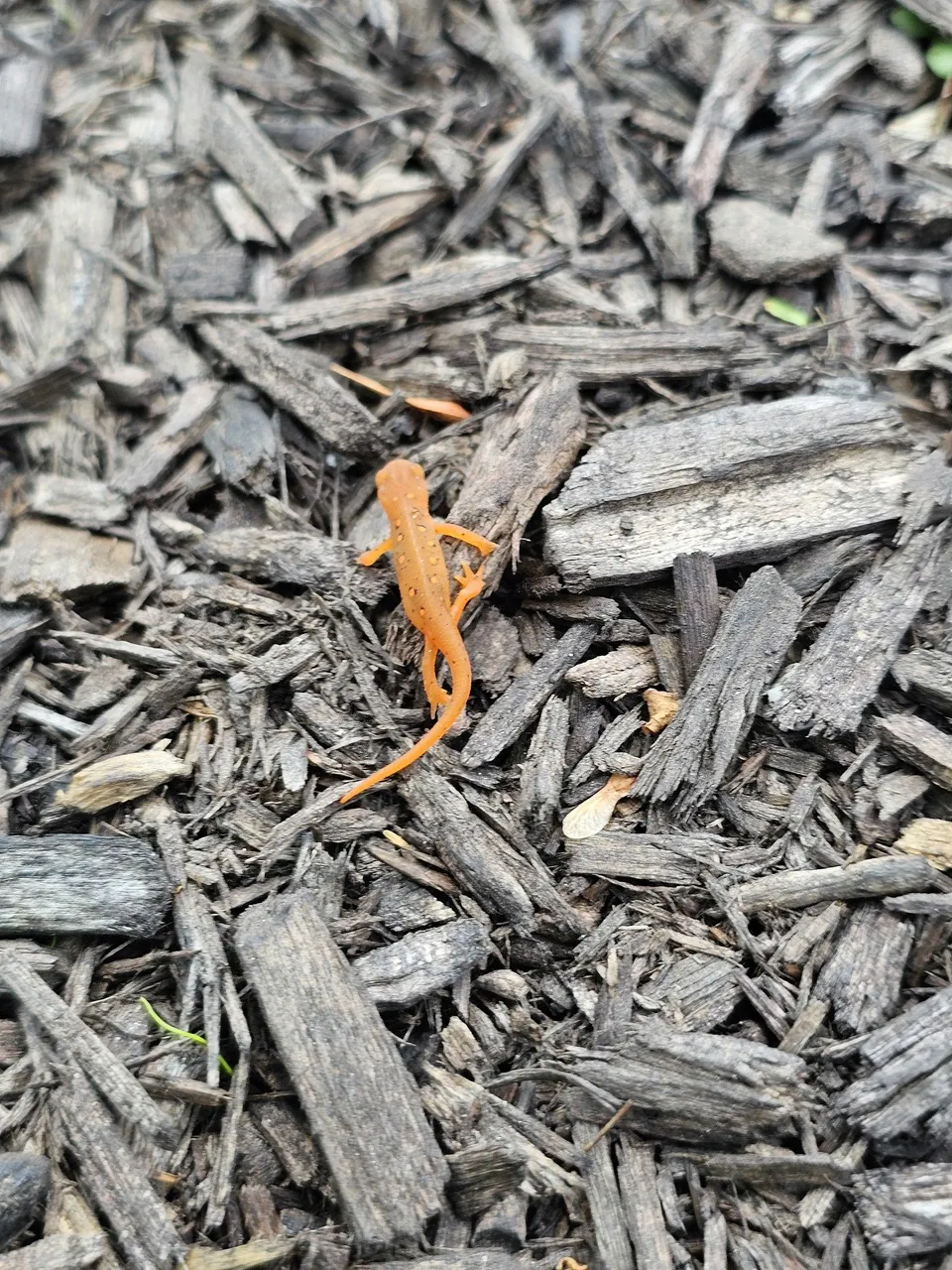Discovering Hidden Worlds: Photography from an Ant's Perspective
Sometimes the most extraordinary discoveries happen in the most ordinary moments. While spending my days landscaping, crawling through bushes, weeding garden beds, and maintaining the green spaces that make neighborhoods beautiful, I stumbled upon something completely unexpected: an entirely different world existing right beneath our noses.
It started simply enough. I was on my hands and knees, working my way through some particularly dense plantings in front of a client's house, when I found myself genuinely looking around from this ground-level perspective. What I saw stopped me in my tracks.
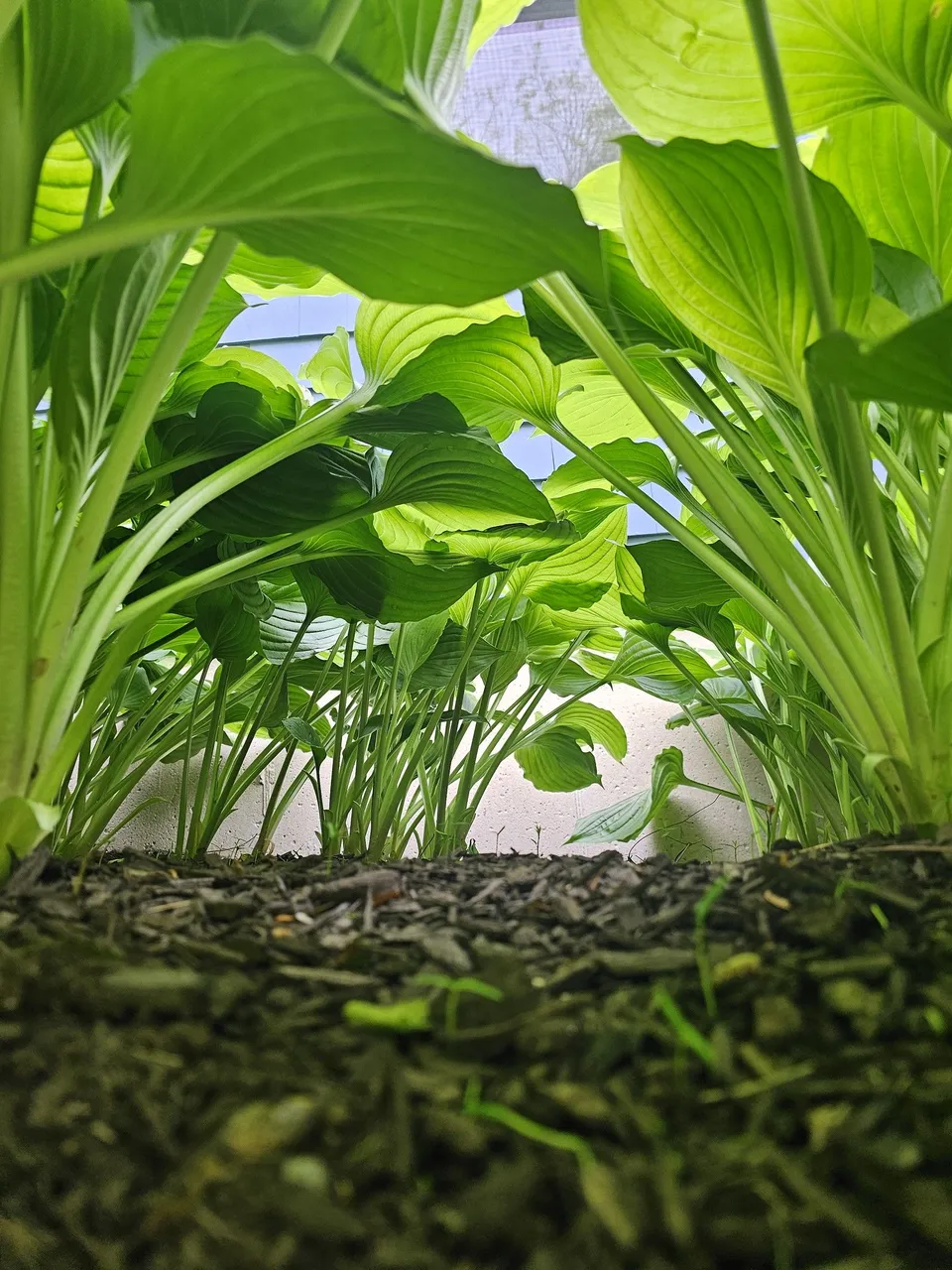
The World According to Ants
From down here, crouched among the roots and mulch, the familiar suburban landscape transforms into something magical. Those carefully planted hostas and ornamental grasses that look so neat and tidy from standing height become towering giants creating cathedral-like spaces underneath their broad leaves. The manicured mulch beds turn into vast landscapes of rich, dark earth punctuated by the occasional fallen leaf or emerging shoot.
It's like discovering an alien planet that's been hiding in plain sight all along.
The first time I really noticed this transformation, I was working underneath what I now know are some kind of large-leafed plantings - probably hostas, though I'll admit I'm better at maintaining plants than naming them. The enormous green leaves stretched overhead like a living ceiling, their parallel veins creating intricate patterns against the filtered sunlight. Below, the carefully maintained soil created clean, smooth pathways between the plant stems.
I grabbed my phone and took a quick snapshot, then forgot about it until later that evening when I was scrolling through my photos. That's when it hit me - this looked like something from a science fiction movie, not a suburban front yard.
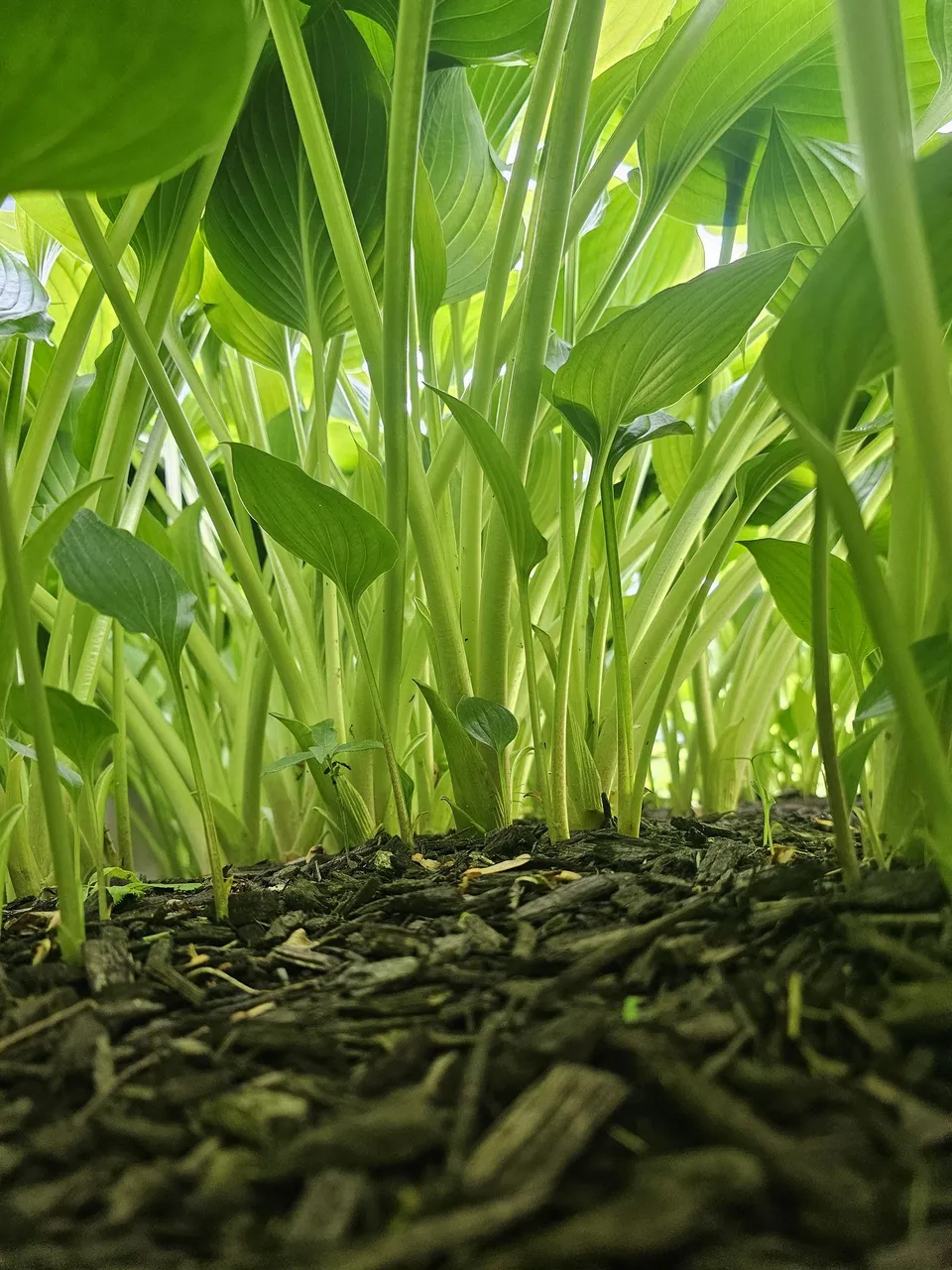
Finding Art in the Everyday
This accidental discovery got me thinking about perspective in a whole new way. We spend most of our lives seeing the world from our standing height, roughly five to six feet off the ground. But there's an entire universe of visual experiences happening at ankle level that we completely miss in our day-to-day lives.
Now, as I move through my landscaping work each day, I find myself deliberately getting down to ant eye level during my breaks. I'll position my camera right at ground level, sometimes lying flat on my stomach in the mulch, and look up through these miniature forests that someone carefully planned and planted without ever considering how they might look from below.
The results have been consistently surprising. What appears to be a simple border of greenery from the sidewalk becomes an intricate maze of architectural spaces when viewed from underneath. Leaves overlap to create natural archways. Stems form columns supporting these living roofs. Light filters down in dappled patterns that change throughout the day as the sun moves overhead.
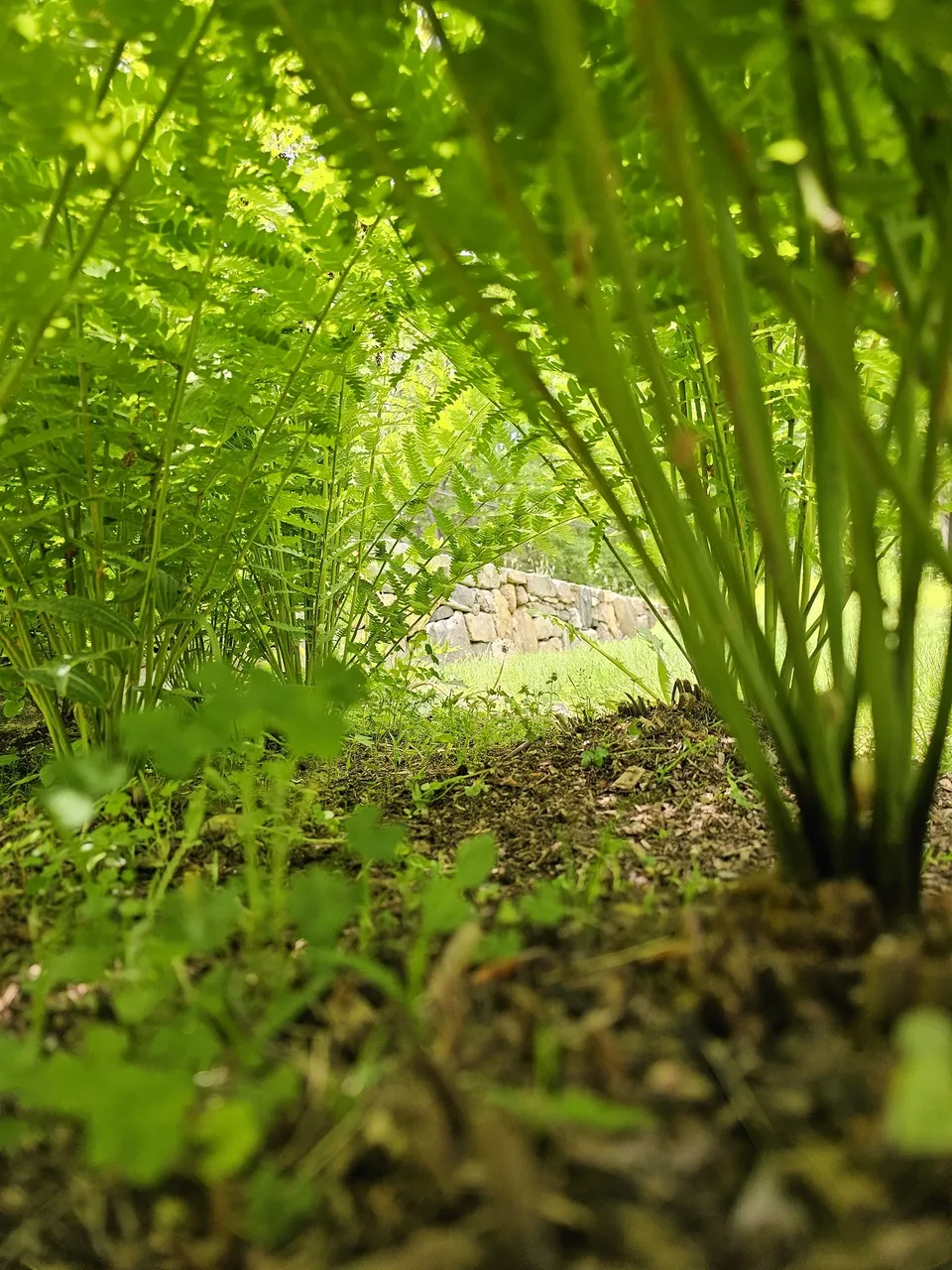
The Technical Challenge
Photographing from this ultra-low perspective presents some interesting challenges. For one thing, you end up getting pretty dirty. There's no way around it - if you want that true ant's-eye view, you're going to be lying in the dirt, mulch, and whatever else happens to be on the ground in that particular spot.
The lighting can be tricky too. These understory spaces are naturally darker than the open areas above, so getting proper exposure while maintaining the sense of looking up toward the light requires some experimentation with camera settings. I've been shooting mostly with my phone camera, which actually handles these challenging lighting conditions better than I expected.
Composition becomes more important when you're working with such an unusual perspective. The normal rules of photography don't quite apply when you're shooting from ground level looking up. Suddenly, the soil and mulch in the foreground become major elements of the composition, and you have to think carefully about how to frame the view through the canopy above.
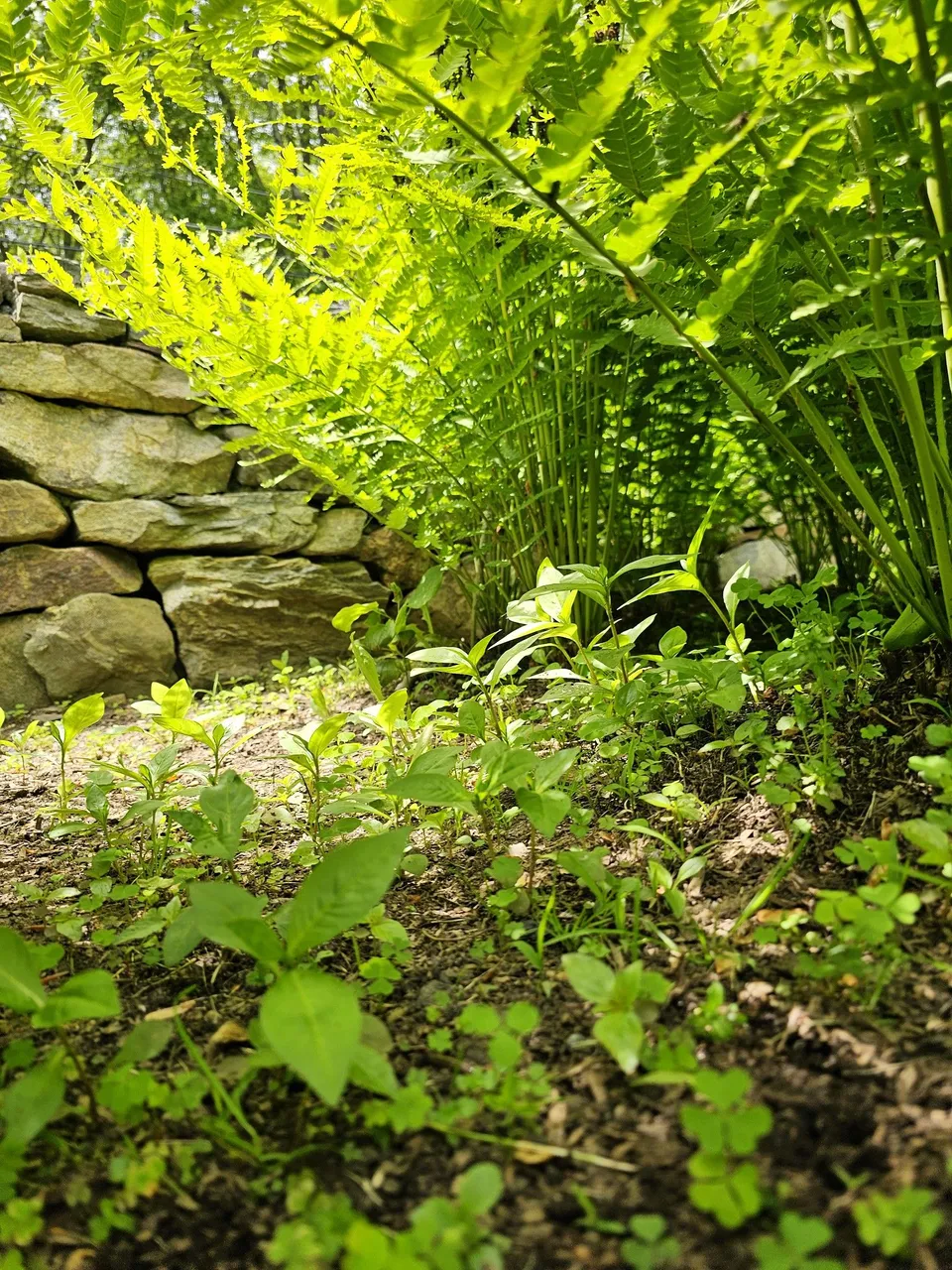
Unexpected Beauty in Maintenance Work
What I find most fascinating about this whole discovery is how it's changed my relationship with the work itself. Landscaping and garden maintenance can sometimes feel repetitive - the same weeding, the same trimming, the same seasonal cleanup tasks. But now I find myself actively looking forward to working in different locations because I know each property will offer its own unique collection of these hidden microcosms.
Some yards have tall, grass-like plants that create almost prairie-like spaces underneath. Others feature dense shrubs that form cozy, cave-like environments. The formal gardens with their carefully spaced perennials offer more structured, geometric views, while the more naturalistic plantings create wild, jungle-like perspectives.
Each location tells a different visual story when seen from this unusual vantage point, even though they might look fairly similar from normal standing height.

The Editing Process
Back home in the evenings, I've been experimenting with editing these photos to bring out the otherworldly quality that first caught my attention. Sometimes that means adjusting the contrast to emphasize the dramatic lighting differences between the dark understory and the bright sky visible through the leaf canopy. Other times, I'll enhance the green tones to really emphasize the lush, tropical feeling these spaces can have.
The goal isn't to create something completely artificial, but rather to capture and emphasize the sense of wonder I feel when I first discover each of these hidden spaces during the workday.
Plans for the Week Ahead
I'm planning to continue this photographic exploration throughout the rest of this week's work schedule. Each property I visit offers new opportunities to discover these ant-level perspectives, and I'm curious to see how different seasonal conditions, weather, and times of day might affect what I capture.
Spring is actually an ideal time for this kind of photography because the plants are actively growing and the light is constantly changing as leaves fill in and create new patterns of shadow and illumination. What looks one way in the morning might be completely transformed by afternoon as the sun angle changes and new growth appears.
I'm also thinking about trying some different shooting techniques - maybe some macro shots that focus on specific details within these spaces, or perhaps some wider shots that capture more of the overall environment from this low perspective.
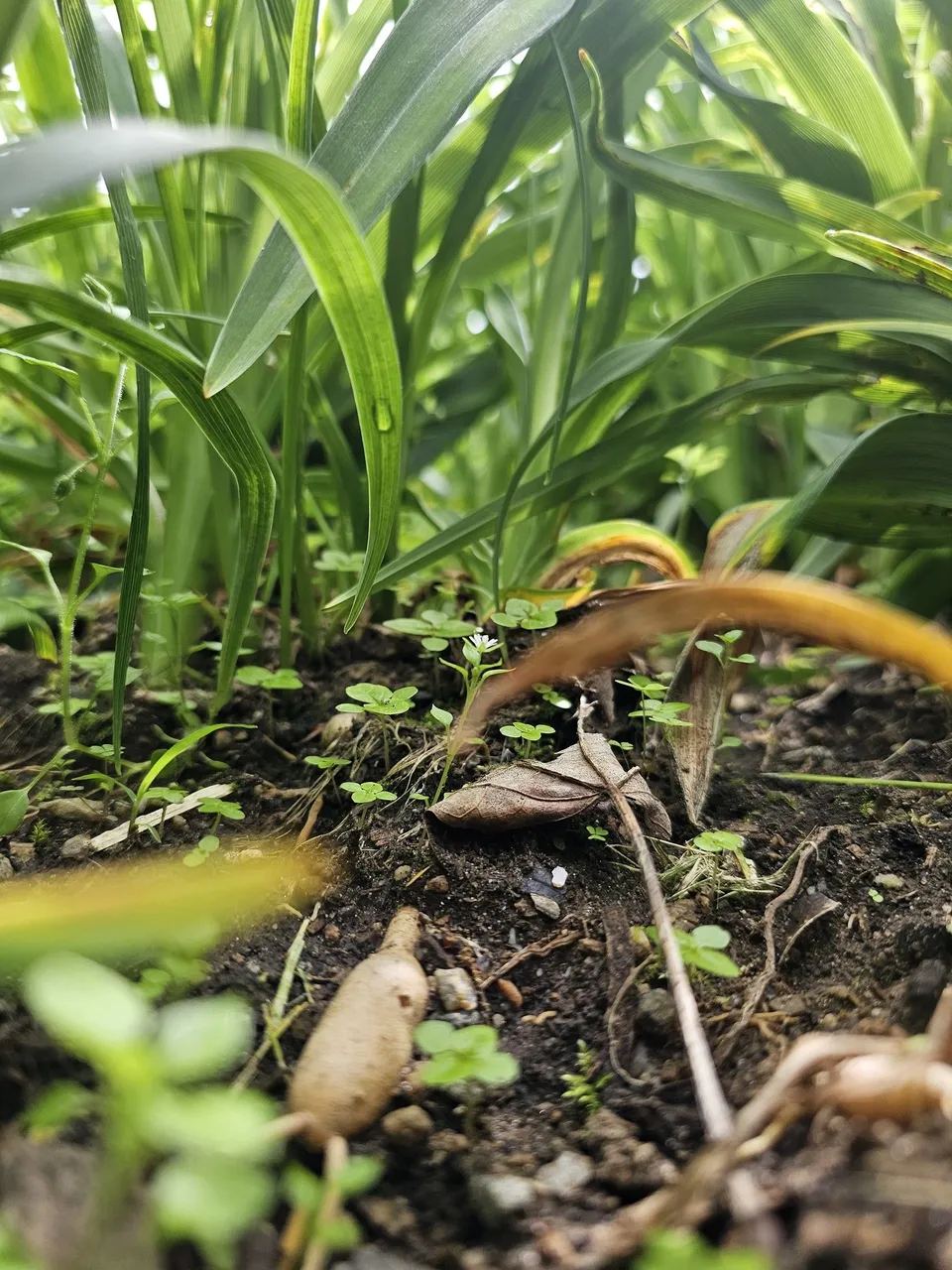
A New Appreciation
This whole experience has given me a new appreciation for the complexity and beauty of even the most basic landscaping. Those homeowners who carefully plan and plant their front yard gardens probably never imagine that they're creating these intricate, three-dimensional spaces that exist in a parallel world just inches above the ground.
There's something humbling about literally getting down to earth level and seeing the environment from the perspective of the smallest creatures that live in these spaces. It's a reminder that beauty and wonder exist at every scale, from the grand landscape views we normally notice down to these intimate, hidden worlds that require us to change our perspective entirely.
As I continue with this week's landscaping work, I'll be keeping my camera handy and my eyes open for more of these accidental art installations hiding in plain sight. Who knows what other hidden worlds are waiting to be discovered, just a few inches from where we normally look?
